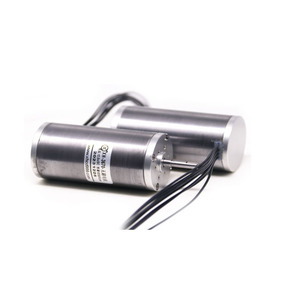Introduction to Electronic Control Motors
Electronic control motors represent a sophisticated and innovative solution in the realm of automation and motor control. These motors are designed to provide precise control of torque, speed, and position, making them essential components in various modern applications. With advancements in electronics and digital technologies, electronic control motors have revolutionized industries by enhancing operational efficiency, reliability, and performance.
Types of Electronic Control Motors
There are several types of electronic control motors, each suited for specific applications and performance needs. The most common types include:
- Stepper Motors: Ideal for applications requiring precise control over rotation and positioning, such as 3D printers and CNC machines.
- Servo Motors: These motors utilize feedback systems to adjust their operation in real-time, making them perfect for robotics and automation systems.
- DC Brushless Motors: Known for their high efficiency and longevity, they are widely used in computer peripherals and electric vehicles.
- AC Induction Motors: Common in industrial applications, they offer high reliability and are efficient for heavy-duty operations.
Applications of Electronic Control Motors
The versatility of electronic control motors allows them to be applied across a wide range of industries and use cases, including:
- Manufacturing: Automating assembly lines and robotic work cells for increased productivity.
- Automotive: Used in electric power steering systems, electronically controlled throttles, and more.
- Aerospace: Precision control in systems such as flight control surfaces and landing gear.
- HVAC: Regulating airflow and temperature in climate control systems for energy efficiency.
- Consumer Electronics: Providing precise motor control in devices like cameras, drones, and video game controllers.
Features and Advantages of Electronic Control Motors
Electronic control motors come equipped with a multitude of features that enhance their performance and usability. Here are some key attributes:
- High Precision: Provide accurate speed and position control, essential for applications requiring meticulous operation.
- Energy Efficiency: Modern designs reduce power consumption, leading to lower operating costs and environmental impact.
- Compact Design: Many electronic control motors have a smaller footprint compared to traditional motors, allowing for easier integration into various applications.
- Programmability: These motors can be easily programmed for specific tasks and adjusted as operational requirements change.
- Durability: Designed to withstand tough working conditions, they offer long lifespans and reduced maintenance needs.
Conclusion
In a world that increasingly relies on automation and precision, electronic control motors stand out as vital components across multiple sectors. They reduce operational costs, enhance efficiency, and offer unparalleled control, making them essential in modern applications. With various types and extensive use cases, understanding their features and advantages can help businesses and engineers make informed decisions regarding their integration.



















































































































































































































